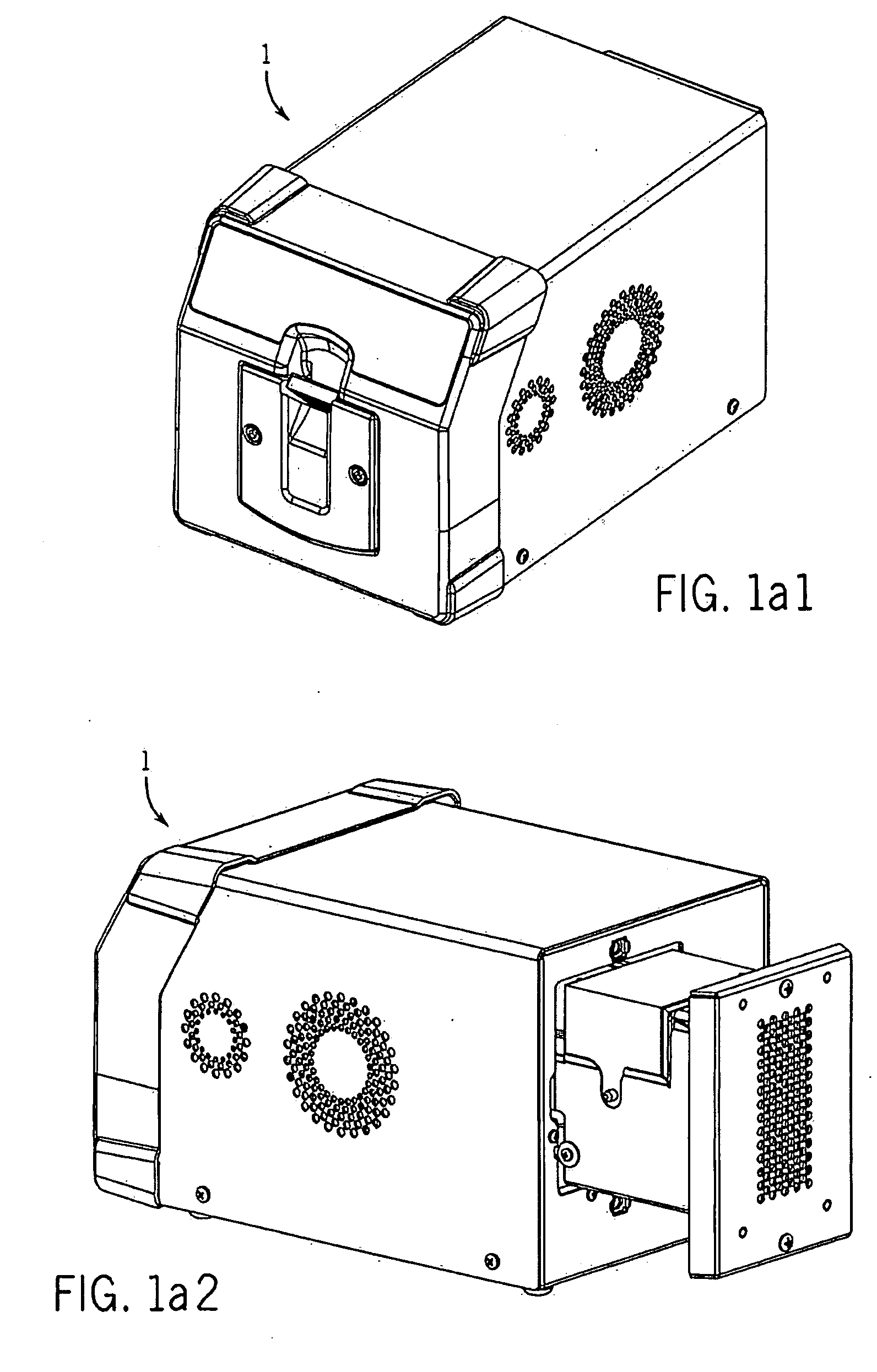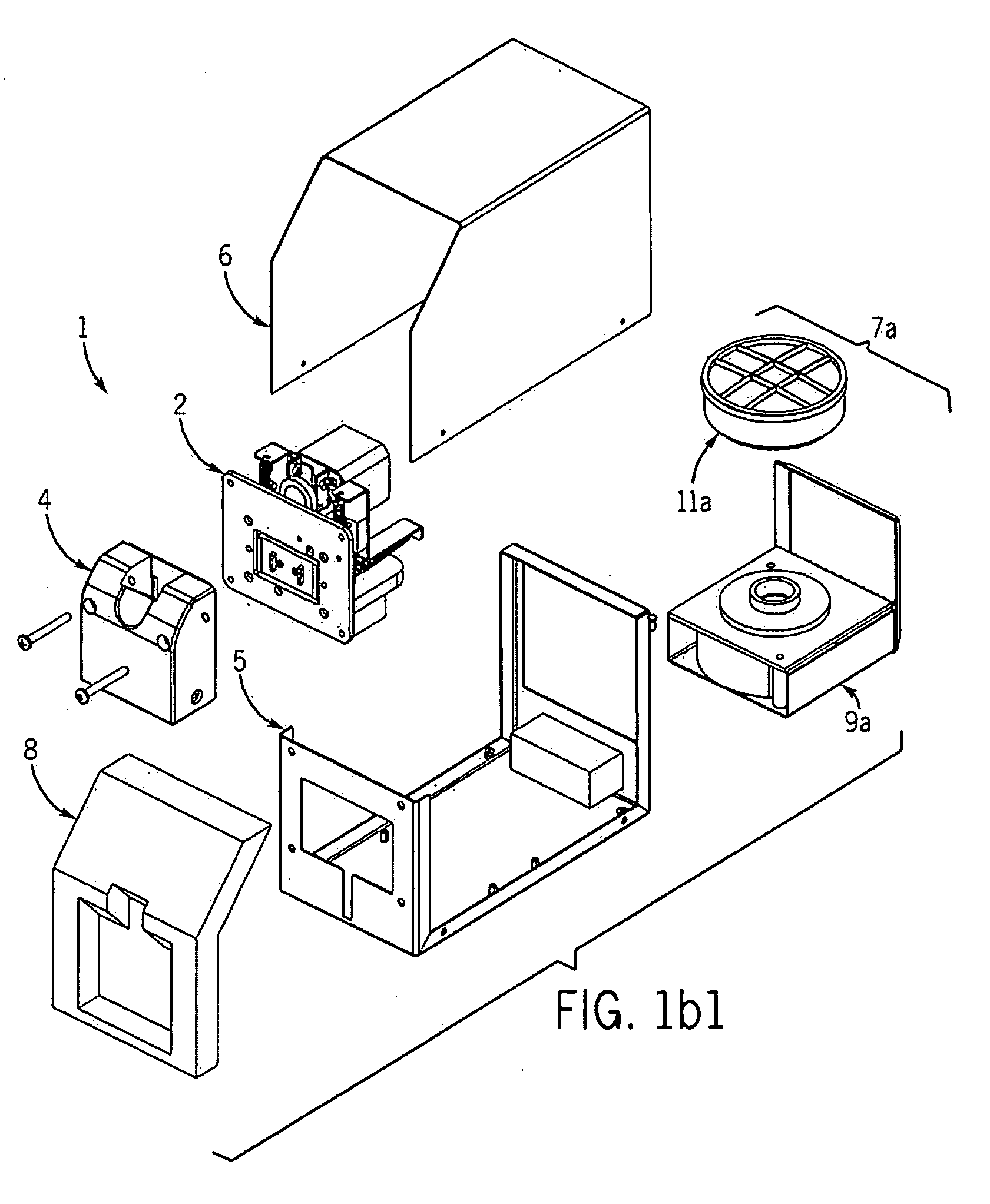Device for Attaching a Label to a Substrate
a technology for attaching devices and substrates, which is applied in the direction of lamination control, transportation and packaging, other domestic objects, etc. it can solve the problems of psa losing its ability to bind the label to the object, the process can last for hours, and the use of harsh environments is limited. , to achieve the effect of small cross-section and longer length
- Summary
- Abstract
- Description
- Claims
- Application Information
AI Technical Summary
Benefits of technology
Problems solved by technology
Method used
Image
Examples
Embodiment Construction
[0048]Staking device 1, as shown in FIGS. 1a1 and 1a2, is described in terms of permanently attaching a thermoplastic label that has been provisionally attached to a tissue cassette made of thermoplastic material. Those skilled in the art understand that various modifications to the device can be made to accommodate labels and substrates comprising other materials and designs. Various items of equipment such as electrical connections, circuit boards, power supplies, fittings and the like have been selectively omitted so as to simplify the drawings. The following description does not limit the scope of the device, but particularly points out several embodiments. Additionally, like numerals have been used to identify like parts throughout.
[0049]The staking device 1 creates a collar bond 33 that bonds a label 53 to a label-bearing face 19 of a substrate 24 (see FIG. 12c). The collar bond 33 as referenced in this application is defined as a substrate 24 that has been melted and displace...
PUM
| Property | Measurement | Unit |
|---|---|---|
| rotation | aaaaa | aaaaa |
| pressure | aaaaa | aaaaa |
| heat | aaaaa | aaaaa |
Abstract
Description
Claims
Application Information
 Login to View More
Login to View More - R&D
- Intellectual Property
- Life Sciences
- Materials
- Tech Scout
- Unparalleled Data Quality
- Higher Quality Content
- 60% Fewer Hallucinations
Browse by: Latest US Patents, China's latest patents, Technical Efficacy Thesaurus, Application Domain, Technology Topic, Popular Technical Reports.
© 2025 PatSnap. All rights reserved.Legal|Privacy policy|Modern Slavery Act Transparency Statement|Sitemap|About US| Contact US: help@patsnap.com



